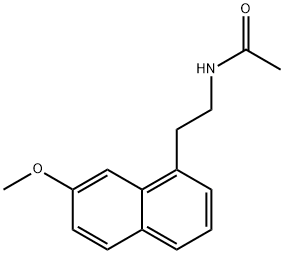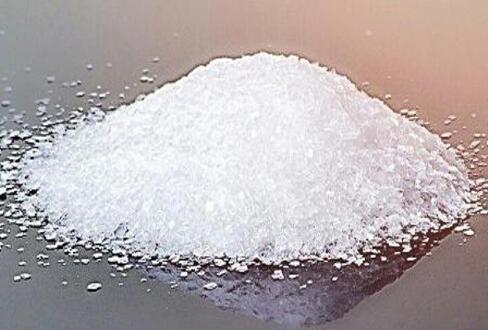Agomelatine: Benefits and Mechanism of action
Description
Chemically, agomelatine is one of a series of naphthalenic derivatives related to melatonin. It was developed at Servier Laboratories (France) in the early 1990s and given the code number S20098. The drug is a novel antidepressant that is currently approved in Europe and under review for approval in the United States.
Benefits
A melatonin MT1 and MT2 agonist and 5-HT2C antagonist, agomelatine, has demonstrated efficacy in depressed patients and has a favorable side-effect profile with no daytime sedation. Agomelatine produces subjective and objective improvements in sleep, with increased slow-wave sleep and improved sleep quality and continuity, with no effect on REM sleep.

Mechanism of action
Agomelatine's mechanism of action—melatonin agonism—and antidepressant efficacy reinforce the comorbid and interconnected nature of sleep disturbance and mood disorders and further demonstrate the role of antidepressants in the treatment of insomnia. The psychotropic effects of agomelatine are caused by the synergy between the compound's melatonergic and 5-HT2C receptor properties [1].
Agomelatine is an orally active, selective agonist for the melatonin MTNR1A and MTNR1B receptors and a selective antagonist for the serotonin HTR2C receptor. Its receptor-binding profile may uniquely affect receptor-coupled signaling processes and downstream signaling pathways, which is indicated not only in mood disorders but also in CRSWDs. Agomelatine is suggested to contribute to resynchronization by inducing the sensitization of adenylate cyclase to sustain long enough to support the action of PER1 protein to repress PER2 protein and subsequently inhibit monoamine oxidase A activity, thus increasing dopamine release to the prefrontal cortex and the striatum.
That the mechanism of action of agomelatine differs from that of other classes of antidepressants is exemplified by the finding that it has no affinity (Ki > 10 μM) for most screened receptors, including adenosine, adrenoceptors, dopamine (DA), GABA, muscarinic, nicotinic, histamine, excitatory amino acid, benzodiazepine and sigma receptors, as well as sodium, potassium and calcium channels. Similarly, most 5-HT receptors are not recognized by the compound, which has only some affinity for the 5-HT2 receptor family. Indeed, agomelatine binds with the 5-HT2C receptor (pKi = 6.2) and also interacts with cloned human 5-HT2B receptors (pKi = 6.6) but shows negligible affinity at 5-HT2A receptors (pKi < 6). That agomelatine acts as an antagonist at 5-HT2C and HT2B receptor subtypes has been established in transfected cells expressing human 5-HT2C receptors, in which the compound antagonizes both the 5-HT-induced specific binding of [35S]-GTP-γ-S to G-proteins specifically coupled to the receptors and the 5-HT-induced activation of PLC.
Clinical pharmacology
Agomelatine is an acetamide naphthalene analog of melatonin dispensed in capsule form. Investigations of the action of agomelatine on over 80 receptors and enzymes revealed negligible affinity (IC50 > 10−5 M) for all potential targets except MT1 (KI = 0.1 nM); MT2 (KI = 0.12 nM) and 5HT2C (pKi = 6.2 μM). In addition, agomelatine dose-dependently blocked the induction of penile erections by 5HT2C agonists and dose-dependently enhanced dialysis levels of noradrenaline and dopamine in the frontal cortex but not in the nucleus accumbens or striatum of freely moving rats. No effect on serotonin levels was observed[2].
Agomelatine is absorbed rapidly by the oral route and metabolized in the liver through cytochrome P450 1A2 and 2C9 isoenzymes, with metabolites predominantly excreted in urine. The mean half-life of agomelatine is 2.3 hours. Co-administration of compounds that are metabolized by 1A2, including fluvoxamine, a potent inhibitor of the 1A2 isoenzyme system, may result in increased plasma levels of agomelatine. At the same time, inducers of 1A2, such as caffeine or nicotine, are likely to reduce agomelatine levels.
References
[1] Sidney H Kennedy, Beata S Eisfeld. “Agomelatine and its therapeutic potential in the depressed patient.” Neuropsychiatric Disease and Treatment 3 4 (2007): 423–8.
[2] B Guardiola-Lemaitre. “Agomelatine: mechanism of action and pharmacological profile in relation to antidepressant properties.” British Journal of Pharmacology 171 15 (2014): 3604–3619.
You may like
Related articles And Qustion
Lastest Price from Agomelatine manufacturers

US $0.00/kg2025-11-05
- CAS:
- 138112-76-2
- Min. Order:
- 25kg
- Purity:
- 0.99
- Supply Ability:
- /

US $0.00/KG2025-05-06
- CAS:
- 138112-76-2
- Min. Order:
- 1KG
- Purity:
- 0.99
- Supply Ability:
- 1000KG



